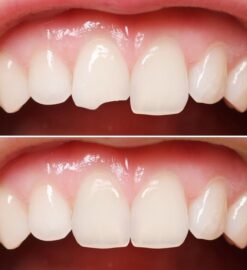Yes, a dentist can treat your child, but it’s best to look for a children’s dentistry Sunnyvale

Childhood is the stage from birth to adolescence. It is a period of learning, curiosity, and development for children. And of course, it is a particular and unique period that requires treatment accordingly. All dentists can treat children, but pediatric dentists receive extra training to be able to do so.
After completing their degree, pediatric dentists will take more time to receive additional training because their little ones need it. This specialized training is called a pediatric residency; these dentists take another two to three years to hone their skills. Pediatric dentists observe children exclusively, from the time their first tooth erupts through their teenage years. Just as your little one sees a pediatrician for physical problems, they need a professional exclusively for their teeth.
Children’s dental treatments are different from those of adults. Sealants, pulpotomies, pulpectomies, space maintainers, fluoridation, or orthopedics, are common treatments for growing patients. A pediatric dentist or pediatric dentist is familiar with them, while, on the contrary, they are not performed or less usual in generic dental clinics with adult patients.
As for the materials, they will not be the same as in adults. In children’s dentistry Sunnyvale, there are different materials specific to this specialty. Thus, it is worth mentioning preformed metal crowns, space maintainers, or the use of other materials for making fillings such as silver amalgams or ionomer cement.
The facilities that the children’s dental clinic should have. It should be an ideal place where a child feels comfortable, healthy, and safe. The primary objective of a pediatric dentist is to make children happy to go to the dentist.
As a rule, children have a great capacity for observation. They are even more observant than adults. That is why the first thing they will do when they arrive at the dentist’s office is to look at how it looks, its decoration, its layout, etc. In the waiting room, there may be a table and small chairs for them to sit on, that they have stories or comics; something to let them know that children are there, which can help them calm down.
Calling several children in a row is also a good practice. When the child sees other children, the situation is normalized and, if the other children behave well, obey the dentist and are “brave,” and do not cry, this will reinforce their positive behavior.
Children deserve a different, better, special treatment, according to their age. They cannot be treated the same as adults since they are not adults. They have fears, ignorance of the situation, and a lot of uncertainty, which must be considered. A children’s dentist needs to be constantly updated on the latest knowledge and advances in the field.
It is essential to normalize the visit to the dentist and that it is necessary to work from prevention, so it is appropriate to plan routine check-up visits, even if there are no damaged teeth. In this way, the child will experience it as usual as going to the pediatrician, and as an adult, it will be more likely that they will continue to visit the dentist regularly.
When working with children, parents must have clear guidelines for action. It is essential to insist that they are responsible for ensuring that children acquire correct oral hygiene habits and that the sooner they start, the better. From a very young age, children must learn to brush their teeth after every meal and do it correctly.



